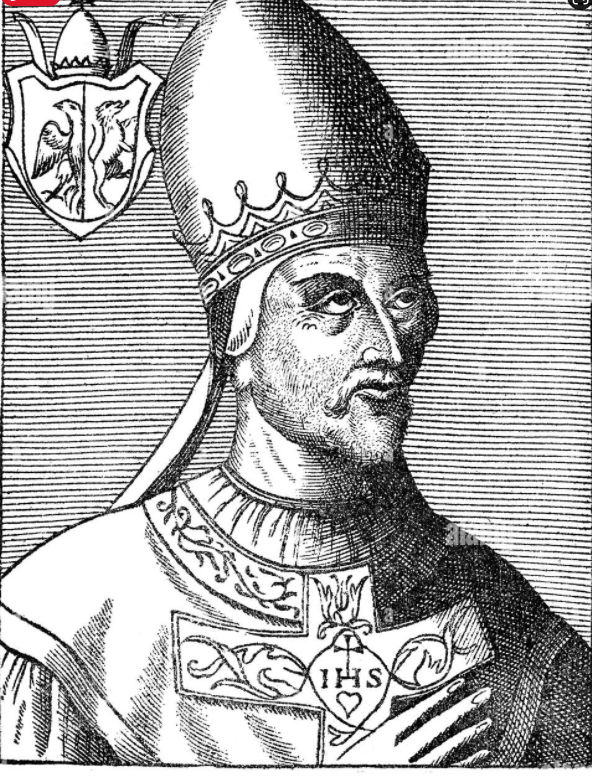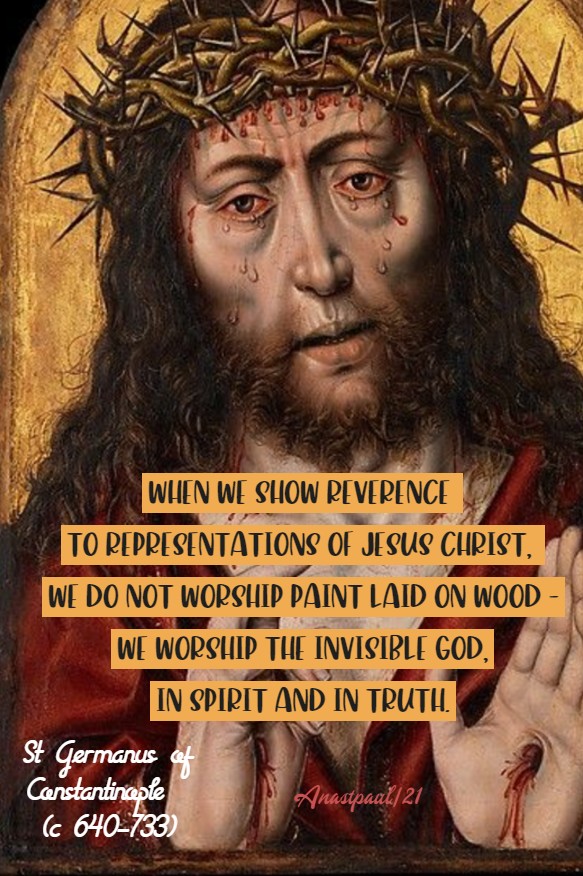Saint of the Day – 13 March – Saint Nicephorus (c758-829) Bishop and Confessor, Defender of Sacred images. Nicephorus was the Bishop of Constantinople from 806-815, Scholar and Writer. Born in c758 in Constantinople (modern-day Istanbul, Turkey) and died at the Monastery he had founded on the Black Sea coast on 5 April 828 or 2 June 829 (sources vary). Both these dates are variously celebrated in his honour.
The Roman Martyrology reads today: “At Constantinople, the Bishop St Nicephorus. In defence of the traditions of his forefathers and of the Churrch, the worship of Sacred images, he opposed the Iconoclast Emperor, by whom he was sent into exile, where he underwent a long martyrdom of fourteen years and departed for the Kingdom of God.”
This champion of the orthodox view in the second contest over the veneration of images belonged to a noted family of Constantinople. He was the son of the Imperial Secretary Theodore and his pious wife ,Eudoxia. Eudoxia was a strict adherent of the Church and Theodore had been banished by the Emperor Constantine Copronymus (741-75) on account of his steadfast support of the teaching of the Church concerning images.
While still young Nicephorus was brought to the Court, where he too became an Imperial Secretary. In 787, with two other officials of high rank, he represented the Empress Irene in 787 at the Second Council of Nicaea (the Seventh Ecumenical Council) which declared the Doctrine of the Church regarding images. Shortly after this Nicephorus sought solitude on the Thracian Bosporus, where he had founded a Monastery. There he devoted himself to ascetic practices and to the study both of secular learning, as grammar, mathematics and philosophy as well as to the that of the Sacred sciences especially the Scriptures.
Later he was recalled to the capital and given charge of the great hospital for the destitute, possibly that founded by St Basil the Great. Upon the death of Bishop Tarasius (25 February, 806), there was great division among the Clergy and higher Court officials, as to the choice of his successor. Finally, with the assent of the Bishops and Emperor, Nicephorus was appointed. Although still a layman, he was known by all to be very religious and highly educated. He received Holy Orders and was Consecrated Bishop on Easter Sunday, 12 April 806. He was opposed for a time by St Theodore the Studite after Nicephorus forgave a Priest who married Emperor Constantine VI toTheodota, despite the fact the Constantine’s wife, Mary, still lived. He seems to have been a gentle and forgiving man, devoted to reconciliation.
But in regard to Sacred images, Nicephorus challenged the Iconoclast policies of Emperor Leo V the Armenian without fear and was deposed by a Synod of Iconoclast Bishops at the conniving of the Emperor. Nearly assassinated on several occasions, Nicephorus was finally exiled to the Monastery he had founded on the Black Sea, spending his remaining years there in prayer.
He died in 829, never having been able to return to his See. While Bishop, he brought various reforms to his large Diocese and inspired zealous shepherded his faithful flock. He was also the Author of anti-Iconoclast writings and two historical works, a Chronographia and Brevianim.
In 847, St Nicephorus’ remains were solemnly brought back to Constantinople by Bishop Methodius I and interred in the Church of the Holy Apostles, where they were the object of an annual festival celebrated with much devotion.




































You must be logged in to post a comment.